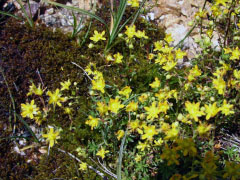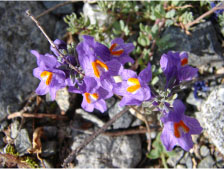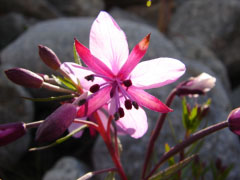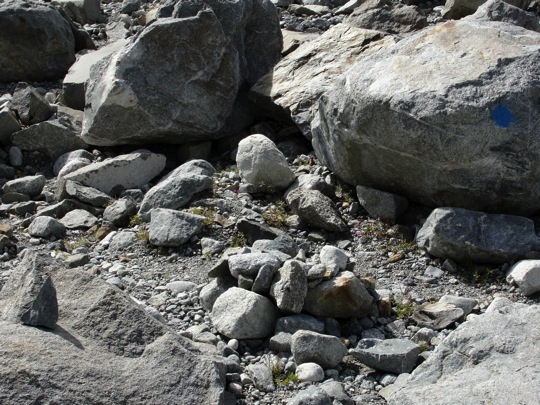 |
|
|
|
|
|
|
Climate warming leads to an acceleration of glacier retreat in most alpine environments exposing new surfaces to colonization by microbiota, plants and animals. Long-term observations of glacier forefields showed that plants typically started to colonize newly deglaciated terrain within 4-8 years with scattered pioneer species like Saxifraga aizoides, Linaria alpina, and Epilobium fleischeri. At least 10-25 years were required for the development of a well established but still discontinuous early successional community. |
 1 1
 2 2
 3 3 |
|
| 1. | Saxifraga aizoides |
| 2. | Linaria alpina |
| 3. | Epilobium fleischeri |
|
In recent years glacier forefield colonization seems to have accelerated: Vegetation started to colonize surfaces earlier, already within 1 to 2 years after deglaciation. In addition, the species composition changed most of the species found on very young substrate are typical species of scree slopes or clonal species, instead of the former typical pioneer species. |
 |
| 4 - Section of monitoring site Nr. 12 in the forfield of Morteratsch glacier, Engadin, Switzerland in August 2010 (ice-free since 2006) with Epilobium fleischeri . Colonization of the plot started within two years (in 2008: 53 individuals, in 2009: ca. 200 individuals, in 2013: 53 individuals, but 27 additional new species of other vascular plants). |
|
A more rapid colonization has also been found for invertebrate animal communities. It is supposed that acceleration and change are caused by warming and a reduction in snow cover duration and moisture availability. Furthermore, there is a negative effect of the glacier on its immediate neighbourhood in terms of microclimate and soil stability, i.e. a faster retreating glacier has a less lasting negative effect on the recently deglaciated terrain, which may further favour a more rapid colonization. Later stages of vegetation development and invertebrate colonization on the other hand do not show remarkable differences compared to longtime observations of vegetation succession on glacier forefields in the Alps so far. However, since in climate warming experiments legumes are favoured by a warmer climate and nutrient addition, species communities may change in the long term in this habitat. |
|
|
|
In many alpine regions changes in human land use cause the most pronounced vegetation change so far. Depending on the altitude abandonment is followed by different courses of successional change and usually leads to an overall decline in species diversity at the regional scale due to homogenization. Invertebrate communities also change correspondingly. As an example, abandonment of summer farms in Norway resulted in a decline in ballooning spider species and in an increase in generalist spiders (fig. 5). These changes are more pronounced than those due to climatic change. |
 |
| 5 - Average species numbers and catches of individuels within three different sites, used as summer farm, abandoned 27 years, and 60 years before the investigations (from Noel 2010) |
13 August 2018 |
||
| |
||